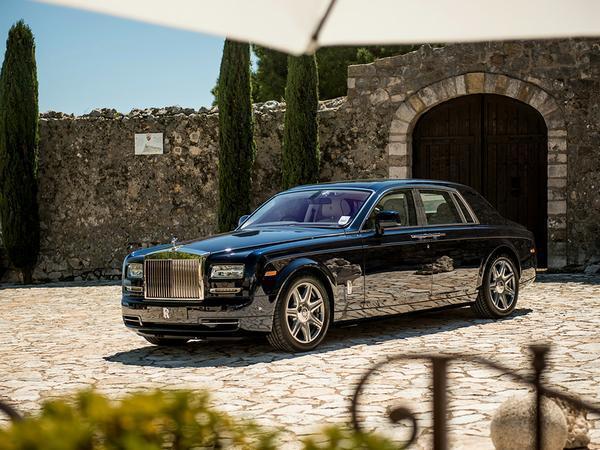Rolls-Royce Phantom: PH Used Buying Guide
The seventh generation Phantom was an entirely new Rolls-Royce. And all the better for it...

It was a bold move, but one that ultimately paid off as the seventh generation to bear the Phantom name proved to be not only a hit with wealthy buyers but also very good to drive. For many customers though, it was more about the experience of buying and owning the Rolls than any marked improvement in ride comfort or refinement compared to its nearest rivals. Most owners would already have a Mercedes S-Class or BMW 7 Series for more mundane duties, so the Phantom was as much about occasion as ability.
Even so, the Roll-Royce immediately impressed with its hushed cabin and cosseting suspension, and, in its standard wheelbase format, offered a surprising amount of agility for a car which tipped the scales at 2560kg. An aluminium platform and body panels helped to keep the kerbweight halfway respectable, while the 460hp 6.75-litre V12 could take the Phantom from rest to 62mph in 6.0 seconds and on to 149mph.

Rolls-Royce added an extended wheelbase version in 2005 with an extra 250mm of rear leg room, while a Phantom Drophead Coupe arrived in April 2006 based on the 100EX concept car. Lastly, a Coupe pitched up in early 2008. After that, the only major change to the Phantom line was a Series II update in mid-2012 that brought adaptive LED headlights, revised dials with a larger main screen and an eight-speed automatic transmission in place of the original six-speeder.
Now replaced by the Phantom VIII, the seventh generation model looks like strong value in comparison when you can pick one up from £75,000. That will be for a high mileage example, so £100,000 is the real starting point for immaculate, lower miles cars from independent specialists, while Series II models begin at £150,000. Starting money for the Drophead Coupe is £135,000 and the Coupe will set you back a little more at around £140,000. Go for an Extended Wheelbase saloon and you'll pay from £125,000.
Search for Rolls Royce Phantoms here

Bodywork and interior

Door locks can fail to proceed, but a new solenoid should sort this.
Expect immaculate paintwork. Body panels are made of aluminium so can be tricky to repair and a new from wing is £2,200 from Flying Spares plus painting.
Leather and trim wear very well, but check stitching along seams for signs of fraying.
Engine and transmission
Cam covers can seep oil and means new gaskets are needed.
Fuel injectors fail on early Phantoms and cost £165 each plus fitting. Listen for any uneven running as a warning sign.
A misfire may also be caused by a faulty pressure control valve. The V12 has two of these and they should be replaced every four years to prevent oil vapour entering the air intake.
Radiator leaks are common on pre-2008 models, so look for any fluid pooled underneath the car or dripping from the undertray.
The pipe that runs from the water pump to the engine block also leaks. A Rolls-Royce dealer will charge £9,000 to cure this, but a complete collapsible pipe replacement kit is available from Flying Spares for £1,344 and fitting should take the total bill to around £2,000 at an independent.
Two batteries are used in the Phantom - one for the engine, the other for auxiliary systems. Make sure both are in good condition by using a multimeter or ask a garage to perform a voltage drop test. New batteries are £130 apiece.

Suspension and steering

Rolls-Royce fitted all Phantoms with air suspension and it can develop leaks with age. Make sure the car sits level at the correct height. Replacement air bags are expensive but Arnott Air Suspension Products offers a refurbishment service.
Ball joints have a lot to deal with because of the Phantom's weight, so listen for any clonks. It's also worth asking a mechanic to check for any play.
Wheels, tyres and brakes
Rolls issued a recall for the brake servo for cars built between the start of 2003 and end of 2009, so make sure it's logged in the service record.
The Phantom weighs 2,560kg, so brakes get a work out. New front discs and pads will set you back £1,000 plus fitting.
Search for Rolls Royce Phantoms here
Search for Rolls Royces here
ROLLS-ROYCE PHANTOM VII
Engine: 6,749cc, V12
Transmission: 6/8-speed auto, rear-wheel drive
Power (hp): 460@5,350rpm
Torque (lb ft): 531@3,500rpm
MPG: 17.8/10.2
CO2: 385/349g/km
Price new: £214,500
Price now: £75,000 upwards
I look at how few comments articles are receiving, the general tenor of the comments by some of the trolling contributors, the snide comments about being geeky expressed about contributors who genuinely know their stuff and have the audacity to write it in a post and this site seems a far cry from the early days. Some of the issues here are not of Pistonheads making, but not sure how to reverse the decline to bring it back to its sparkling best.
Pistonheads... not even pedantry matters anymore
By these new guides are click bait, I meant that the guides are so devoid of content to be of no real use or really satisfying a PHer's interest. Past buyers guides were well researched, if perhaps often ghost written by knowledgeable types who frequented a forum dedicated to that car or marque. If I was in the market for a Phantom, this would not point me very far.
Gassing Station | General Gassing | Top of Page | What's New | My Stuff



